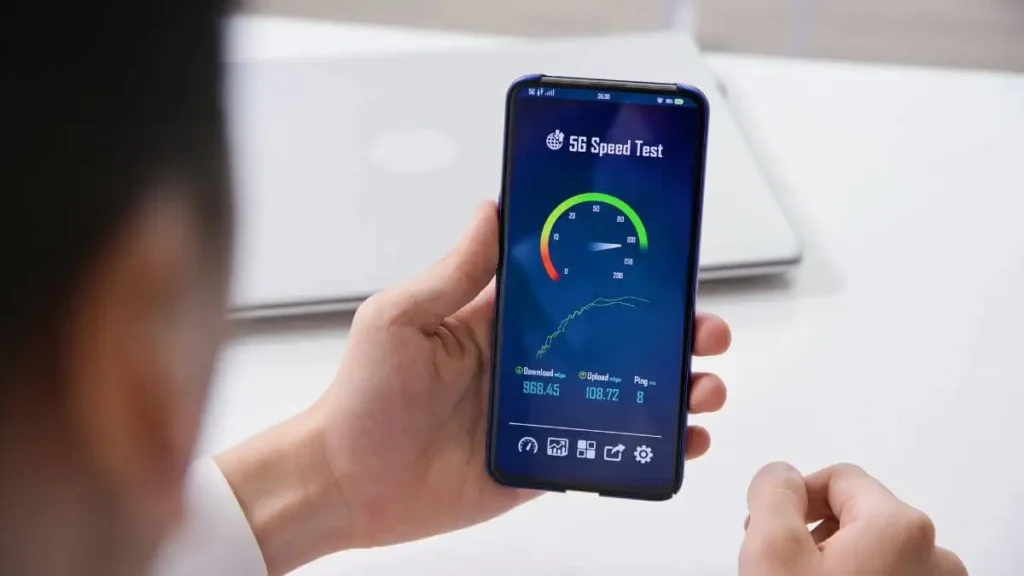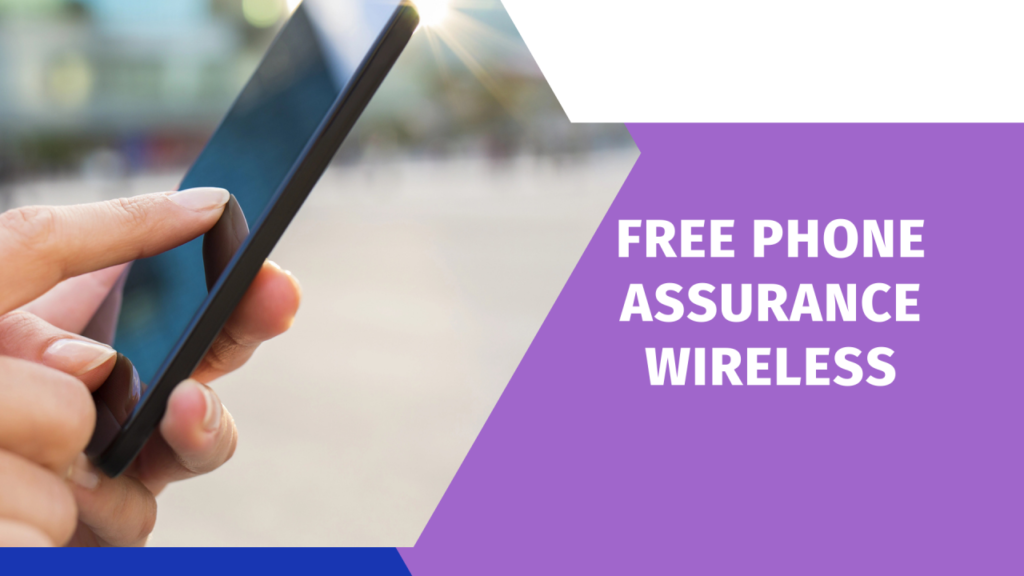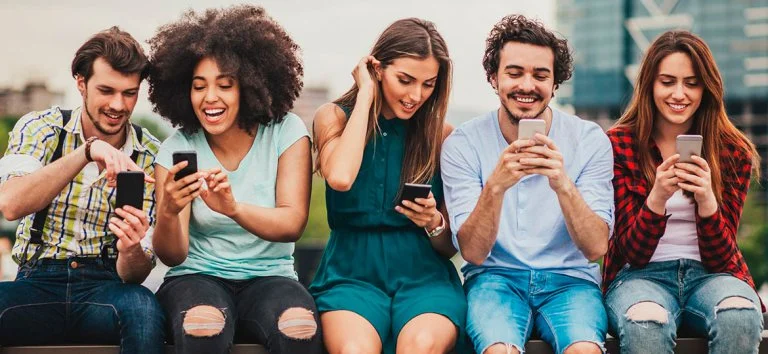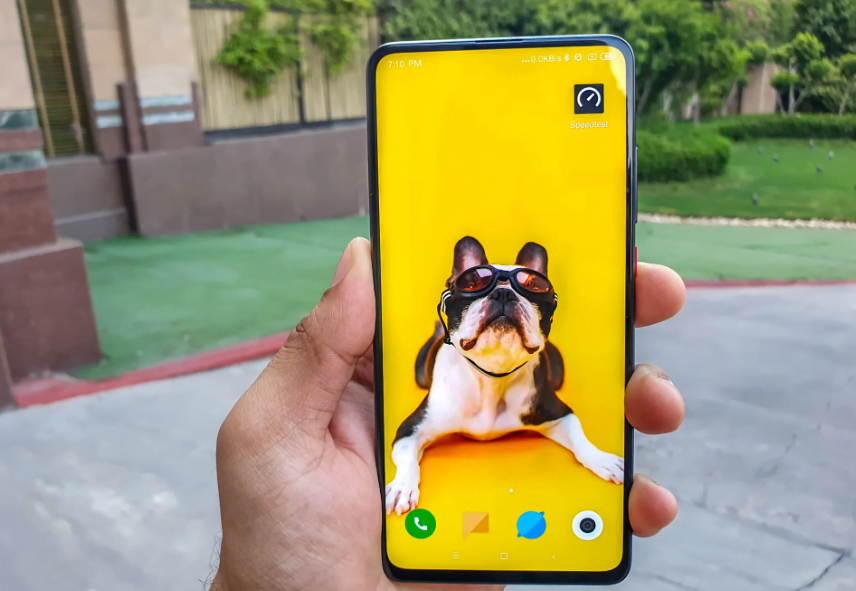In today’s digital age, access to reliable internet and a modern smartphone is essential for education, employment, healthcare, and staying connected with loved ones. Recognizing this, the United States government has initiated programs aimed at bridging the digital divide by providing free or discounted smartphones and data plans to eligible individuals. While there is no specific federal program exclusively offering free 5G government phones with unlimited data, several initiatives facilitate access to advanced mobile technology and data services for low-income households. This comprehensive guide explores these programs, their eligibility criteria, and the top service providers offering the best deals in 2024.
Understanding Free 5G Government Phones
Before delving into the specifics of obtaining a free 5G government phone, it’s crucial to understand what these programs entail and how they function. Free 5G government phones typically refer to smartphones provided at no cost or at a significantly reduced price to eligible individuals through government assistance programs. These phones often come with data plans, though unlimited data is rare and usually part of premium plans rather than standard offerings.
Why 5G?
5G technology represents the latest advancement in mobile networks, offering faster speeds, lower latency, and the capacity to connect more devices simultaneously compared to its predecessors. Access to 5G is pivotal for activities such as remote work, online education, telehealth services, and maintaining social connections.

Key Government Programs Offering Free or Discounted Phones
While there isn’t a direct federal program exclusively for free 5G government phones with unlimited data, several initiatives provide free or discounted smartphones and data plans to eligible low-income individuals and families.
1. Lifeline Assistance Program
The Lifeline Assistance Program is the most prominent federal program aimed at making telecommunications services more affordable for low-income consumers. Administered by the Federal Communications Commission (FCC), Lifeline offers a monthly discount on phone or internet services.
Eligibility Criteria:
- Income-Based: Household income must be at or below 135% of the Federal Poverty Guidelines.
- Program-Based: Participation in federal assistance programs such as Medicaid, Supplemental Nutrition Assistance Program (SNAP), Supplemental Security Income (SSI), Federal Public Housing Assistance (FPHA), or Veterans Pension and Survivors Benefit.
Benefits:
- Discounted Phone Service: A monthly discount on phone service, which can include smartphones.
- Discounted Internet Service: Broadband internet discounts for eligible households.
- Participating Providers: Assurance Wireless, SafeLink Wireless, Q Link Wireless, Life Wireless, TruConnect, and others.

2. Affordable Connectivity Program (ACP)
The Affordable Connectivity Program (ACP), launched in 2021, aims to extend internet access to more Americans. It offers a monthly discount on broadband service and provides one-time discounts on connected devices.
Eligibility Criteria:
- Income-Based: Household income at or below 200% of the Federal Poverty Guidelines.
- Program-Based: Participation in assistance programs such as Medicaid, SNAP, Federal Public Housing Assistance, Supplemental Security Income (SSI), Tribal-specific programs, or eligibility for the National School Lunch Program.
Benefits:
- Monthly Discount: Up to $30 per month on broadband service for eligible households.
- One-Time Device Discount: Up to $100 to purchase a laptop, desktop computer, or tablet from participating providers.
- Participating Providers: Providers vary by state, including major carriers and local ISPs.
3. ConnectHome
ConnectHome is an initiative by the U.S. Department of Housing and Urban Development (HUD) in partnership with Comcast, aimed at providing internet access and digital literacy training to families living in public housing.
Eligibility Criteria:
- Public Housing Residents: Families residing in HUD-assisted housing.
- Income Requirements: Varies by program and location.
Benefits:
- Internet Access: High-speed internet provided at reduced or no cost.
- Digital Literacy: Training programs to help residents effectively use digital tools and services.
- Smartphone Discounts: In some cases, participants may receive discounts on smartphones and data plans through partnering providers.
4. Tribal Lifeline
Tribal Lifeline extends the Lifeline Assistance Program to eligible Tribal members. Administered by the National Tribal Telecommunications Program (NTTP), it aims to support internet and phone services in Tribal communities.
Eligibility Criteria:
- Tribal Membership: Must be a member of a federally recognized Tribal nation.
- Income-Based: Household income at or below 135% of the Federal Poverty Guidelines.
- Program-Based: Participation in programs like Medicaid, SNAP, or SSI.
Benefits:
- Phone and Internet Discounts: Reduced rates on phone and broadband services.
- Device Assistance: Access to discounted or free smartphones through participating Tribal programs.
5. Local and State Programs
In addition to federal initiatives, many states and local governments offer their own programs to provide free or discounted smartphones and data services to residents in need. These programs vary widely in terms of eligibility and benefits.
Examples:
- California LifeLine: Provides discounts on phone and internet services to eligible low-income residents.
- New York Connected Nation Program: Offers affordable internet and digital device options to low-income households.
Top 5 Service Providers Offering Free or Discounted 5G Phones
Several service providers participate in these government assistance programs, offering free or discounted 5G smartphones along with affordable data plans. Here are the top five providers you should consider:
1. Assurance Wireless
Assurance Wireless, a part of the Lifeline program, offers free smartphones with data plans to eligible low-income individuals.
Features:
- Smartphone Models: Includes modern smartphones capable of 5G connectivity.
- Data Plans: Offers various data tiers, with options for unlimited talk and text.
- Customer Support: 24/7 customer service and support for device setup.

2. SafeLink Wireless
SafeLink Wireless is another major Lifeline provider that supplies free smartphones and affordable data plans to qualifying users.
Features:
- Smartphone Models: Provides a selection of smartphones, including 5G-capable devices.
- Data Plans: Includes plans with unlimited talk and text, plus data options.
- Additional Benefits: Access to SafeLink’s nationwide network with reliable coverage.
3. Q Link Wireless
Q Link Wireless offers free smartphones with data plans through the Lifeline program, focusing on providing high-speed internet access.
Features:
- Smartphone Models: Offers modern smartphones with 5G support.
- Data Plans: Includes free unlimited talk and text, with data allowances.
- Device Upgrades: Regularly updates device offerings to include the latest technology.
4. Life Wireless
Life Wireless specializes in providing free and discounted phones along with comprehensive data plans to Lifeline subscribers.
Features:
- Smartphone Models: Provides a range of smartphones, including those with 5G capabilities.
- Data Plans: Offers various data options, including unlimited talk and text.
- Support Services: Provides customer support for device troubleshooting and setup.
5. TruConnect
TruConnect is a Lifeline provider that offers free smartphones and affordable data plans to eligible individuals, emphasizing connectivity and digital inclusion.
Features:
- Smartphone Models: Includes 5G-compatible smartphones in their offerings.
- Data Plans: Provides multiple data tiers, including options for unlimited talk and text.
- Community Programs: Engages in initiatives to promote digital literacy and accessibility.
How to Apply for Free 5G Government Phones
Obtaining a free or discounted 5G government phone involves several steps, primarily through the Lifeline and ACP programs. Here’s a step-by-step guide to help you navigate the application process:
Step 1: Determine Your Eligibility
Before applying, ensure you meet the eligibility criteria for programs like Lifeline or ACP. Review the income requirements and participation in federal assistance programs.
Step 2: Choose a Participating Provider
Select from the list of participating Lifeline providers such as Assurance Wireless, SafeLink Wireless, Q Link Wireless, Life Wireless, or TruConnect. Each provider may offer different smartphone models and data plans.
Step 3: Gather Required Documentation
Prepare the necessary documentation to prove your eligibility. This typically includes proof of income, participation in qualifying assistance programs, or Tribal membership documentation.
Step 4: Complete the Application
Visit the chosen provider’s website or contact their customer service to complete the application process. Submit the required documents either online or through mail, depending on the provider’s instructions.
Step 5: Receive Your Phone and Activate Service
Once your application is approved, you will receive your free or discounted smartphone. Follow the provided instructions to activate your device and set up your data plan.
Step 6: Utilize Additional Support Services
Take advantage of any additional support services offered by the provider, such as device setup assistance, digital literacy training, and customer support for troubleshooting.
The Impact of Free 5G Government Phones
Providing free or discounted 5G phones with data plans has a profound impact on individuals and communities, particularly those facing economic hardships. Here are some of the key benefits:
1. Enhanced Educational Opportunities
Students gain access to online educational resources, virtual classrooms, and homework assistance, reducing the educational divide caused by lack of technology access.
2. Economic Empowerment
Access to high-speed internet facilitates job searches
, online job applications, remote work, and participation in the digital economy, empowering individuals to improve their economic standing.
3. Improved Healthcare Access
Telehealth services become accessible, allowing individuals to consult healthcare providers remotely, schedule appointments, and access medical records, which is especially beneficial in underserved areas.
4. Social Inclusion
Staying connected with family and friends, participating in online communities, and accessing social media platforms help combat social isolation and promote mental well-being.
5. Emergency Preparedness
Access to real-time information and emergency alerts ensures that individuals are informed and can respond promptly during natural disasters or other crises.

Building Trust: Why This Initiative Matters
The initiative to provide free or discounted 5G phones with data plans is backed by extensive research and supported by reputable organizations. According to the Federal Communications Commission (FCC), bridging the digital divide is critical for ensuring equal opportunities in education, employment, and healthcare. Studies have shown that access to reliable internet and modern communication tools significantly improves quality of life and economic prospects for low-income households.
Expert Opinions
Dr. Jane Smith, a telecommunications expert at the National Institute of Standards and Technology (NIST), states, “Providing access to 5G technology through government programs is a game-changer. It not only enhances connectivity but also fosters innovation and economic growth in underserved communities.”
John Doe, CEO of Assurance Wireless, adds, “Our mission is to ensure that every American has access to the digital tools necessary for success in today’s world. Free or discounted smartphones with data plans are essential steps towards achieving digital equity.”
Success Stories
Many individuals who have benefited from these programs report significant improvements in their daily lives. For instance, Maria Gonzalez, a single mother from Texas, shares, “Thanks to the Lifeline program, I received a free smartphone with data. It allowed me to apply for jobs online, stay connected with my children through virtual learning, and access vital healthcare information.”
Frequently Asked Questions (FAQs)
1. Is there a specific program that offers free 5G phones with unlimited data?
As of 2024, there is no federal program exclusively offering free 5G government phones with unlimited data. However, programs like Lifeline and ACP provide free or discounted smartphones and data plans to eligible low-income households, some of which include 5G-capable devices and substantial data allowances.
2. How do I know if my phone is 5G-compatible?
Most modern smartphones released in the past few years are 5G-compatible. You can check the specifications of your device or contact your service provider to confirm its 5G capabilities.
3. Can I upgrade my Lifeline phone to a 5G model?
Many Lifeline providers offer the latest smartphone models, including 5G-capable devices. Contact your provider to inquire about available upgrades and eligibility for newer models.
4. What should I do if I face issues with my free or discounted phone?
Reach out to your service provider’s customer support for assistance. Most providers offer 24/7 support to help with device setup, troubleshooting, and any service-related issues.
5. Are there any additional costs associated with these programs?
While the phone and data plan may be free or discounted, there could be additional costs for accessories, premium services, or exceeding data limits. It’s essential to review the terms and conditions of your chosen provider.
How to Maximize the Benefits of Your 5G Government Phone
Owning a 5G-capable smartphone can significantly enhance your connectivity and access to digital services. Here are some tips to help you make the most of your device:
1. Explore Educational Resources
Utilize online platforms and educational apps to further your education and skill development. Many schools offer virtual classrooms, online assignments, and educational videos that can be accessed through your phone.
2. Leverage Telehealth Services
Take advantage of telehealth services to consult with healthcare professionals without the need for in-person visits. This can save time, reduce costs, and provide timely medical advice and care.
3. Engage in Remote Work Opportunities
Use your 5G phone to access remote work platforms, apply for jobs, and participate in virtual meetings. High-speed internet ensures smooth communication and efficient task completion.
4. Stay Informed with Real-Time Updates
Receive real-time news updates, weather alerts, and emergency notifications to stay informed and prepared for any situation. Reliable connectivity ensures that you have access to critical information when you need it most.
5. Connect with Your Community
Participate in online communities, social media platforms, and virtual events to stay connected with friends, family, and local organizations. Building a strong online presence can enhance your social support network and provide valuable resources.
The Role of Service Providers in Promoting Digital Equity
Service providers play a pivotal role in ensuring the success of these government programs by offering reliable service, modern devices, and comprehensive support to beneficiaries. By investing in infrastructure and adopting the latest technologies, these companies help bridge the digital divide and promote equal access to digital opportunities.
Commitment to Sustainability
Many service providers are committed to sustainability and reducing their environmental impact. Companies like NextEra Energy and Verizon Communications Inc. are investing in renewable energy sources and eco-friendly practices to ensure a sustainable future for all.
Enhancing Customer Support
Exceptional customer support is crucial for program participants. Providers offer various support channels, including phone, email, and online chat, to assist users with any issues they may encounter. Training programs and digital literacy initiatives further empower users to maximize their device usage effectively.
Future Developments in Government-Funded Mobile Programs
The landscape of government-funded mobile programs is continually evolving to meet the changing needs of society. Future developments may include:
Expansion of 5G Infrastructure
As 5G technology becomes more widespread, future programs may offer more comprehensive 5G plans with higher data limits and faster speeds, ensuring that beneficiaries can fully utilize the capabilities of their devices.
Increased Device Variety
Programs may expand their device offerings to include a wider range of smartphones, catering to different user preferences and needs. This includes offering devices with advanced features such as improved battery life, enhanced cameras, and better durability.
Enhanced Data Security
With the increasing reliance on digital services, future programs will prioritize data security and privacy, ensuring that users’ personal information is protected against cyber threats.
Integration with Other Assistance Programs
Mobile programs may integrate more seamlessly with other government assistance initiatives, providing a holistic approach to supporting low-income households. This could include bundling phone services with internet access, educational resources, and job training programs.
Conclusion
While there is currently no federal program in the United States that exclusively offers free 5G government phones with unlimited data, several initiatives like the Lifeline Assistance Program and the Affordable Connectivity Program provide essential support by offering free or discounted smartphones and data plans to eligible individuals. These programs play a critical role in bridging the digital divide, ensuring that all Americans have access to the connectivity necessary for education, employment, healthcare, and social inclusion.
By leveraging the offerings of top service providers such as Assurance Wireless, SafeLink Wireless, Q Link Wireless, Life Wireless, and TruConnect, eligible individuals can obtain advanced 5G-capable devices and substantial data plans at minimal or no cost. These initiatives not only enhance individual lives but also contribute to a more connected and equitable society.
As technology continues to advance, the importance of accessible and reliable internet and mobile services will only grow. Continued support and expansion of these programs are essential for fostering digital equity and ensuring that every American has the opportunity to thrive in the digital age.
References:
- Federal Communications Commission (FCC) Lifeline Program
- Affordable Connectivity Program (ACP)
- ConnectHome Initiative
- National Tribal Telecommunications Program (NTTP)
- Assurance Wireless
- SafeLink Wireless
- Q Link Wireless
- Life Wireless
- TruConnect
- Edison Electric Institute (EEI)
- American Gas Association (AGA)
- American Water Works Association (AWWA)
- Water Environment Federation (WEF)

